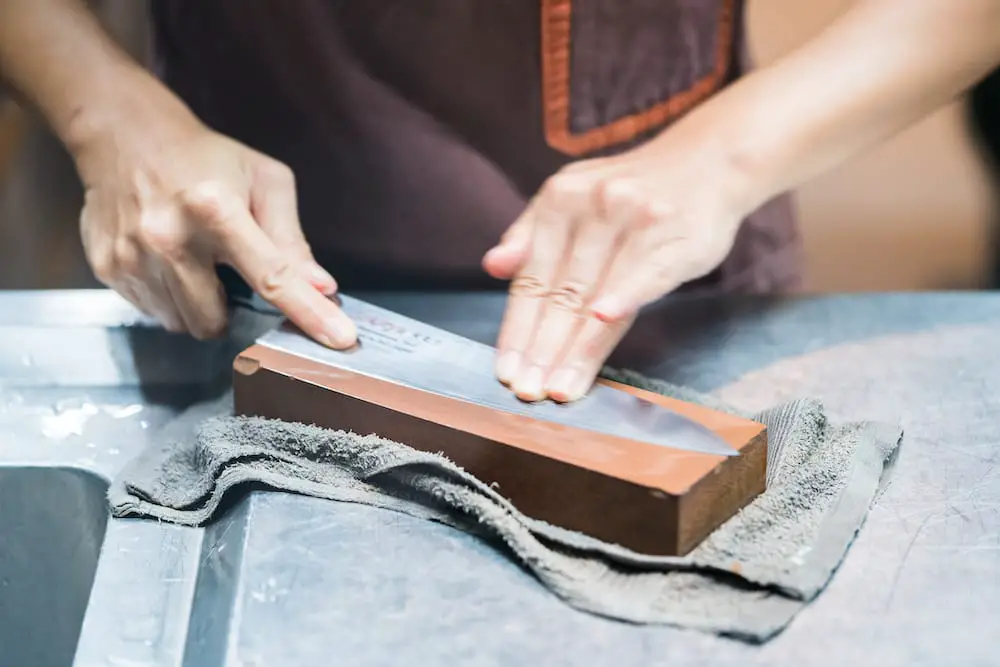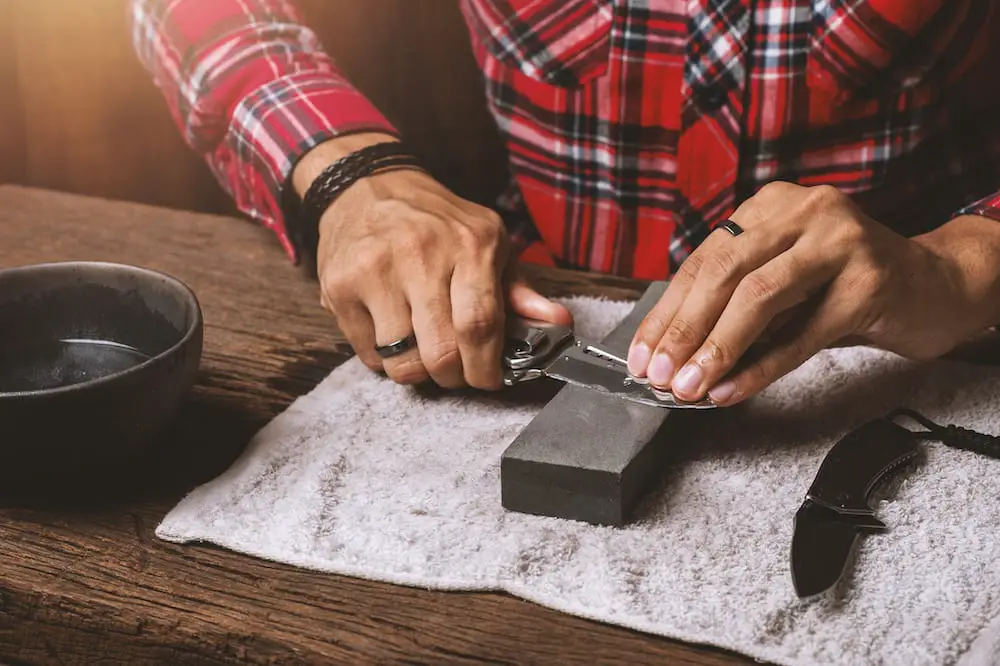Your fillet knife is one of the essential kitchen tools for those who love to prepare fish meals. Sharp fillet knives help in cutting the fish safely and effectively. Thus, sharpening a filleting knife is important to maintain its sharpness and excellent performance.
However, your fillet knives will be in top shape if you use the right sharpening tool, which will depend on where you are at the moment. To help out, we will discuss different ways to sharpen your fillet knives using various sharpening tools. You can choose which method and device will work best in a given situation.
What Makes a Fillet Knife Different
A filleting knife has long and flexible blades to let you move the edges with ease under the skin of the fish and along its backbone without damaging it. Fillet knife blades made of stainless steel are less likely to rust.
Shorter fillet blades are thinner and more flexible than longer ones, but all fillet blades are bendable compared to ordinary, all-purpose kitchen knives. Their flexibility and sharpness result in perfect slices.
The flexible and durable blade offers superb control and easily adapts to the contour of the fish without wasting any fish meat. Though fillet knives are always associated with fish, they are also suitable for cutting poultry meat.
Uses of a Fillet Knife
Aside from the obvious uses of a fillet knife, there are other ways to utilize the sharpness and flexibility of this versatile kitchen tool. A fillet knife is either curved or straight with a thick end and a pointy tip intended for delicate work. You can use it in creating elaborate designs on fruits and vegetables, cutting thin slices of meat, especially chicken breast, and cleaning fish by removing the gills and internal organs.
You can also use a fillet knife in thoroughly removing fish scales. It is also perfect for trimming fat and the webbing from small games and birds. A fillet knife can easily remove the rind, core, and membrane of citrus fruits, so you don’t have to get the bitter taste.
You can also prepare fruits and vegetables using a fillet knife. Cutting a tomato yields a better result with a fillet knife. You can also efficiently remove the corns from the cob using your fillet knife. Peeling a potato and removing seeds from squash is easier if you use a fillet knife too.

Sharpening a Filleting Knife
It is not easy to sharpen a fillet knife, but keeping it razor-sharp is vital to its efficiency. The blade’s flexibility poses a challenge during the honing process because it’s hard to keep the knife in place to obtain a flat edge. Below are some tips to sharpen a fillet knife efficiently.
Tip #1: Remove the Guard Clip
In most cases, the guide clip makes sharpening a bit easier by providing a bigger surface where you can rest the back of your kitchen knife. With that being said, if you are sharpening slim knives or at low angles, the guide clip can be an obstruction and may restrict the blade in getting contact with the sharpening stone.
Observe how the sharpening process goes and decide if you need to remove the clip or not.
Tip #2: Set the Sharpening Angle From 18 to 21 Degrees
Laying your fillet knife on the blade table at a low angle will take a longer time to sharpen and will result in a weak edge. Sharpening filleting knives using the given angle is the most accurate way to get a razor-sharp edge.
Tip #3: Sharpen the Blade Part Bolstered by the Blade Table
Every time you are sharpening a flexible knife like a fillet knife, make sure that the sharpening stone is running on top of the blade table. This method allows you to get a more even angle and will prevent the blade from bending during the honing process.
Tip #4: Try to Slow Down
Don’t be in a hurry to finish the work. Sharpening a filleting knife at a slow pace will let you hold it steady on the blade table. The sharpening stone will also cut better and will stay clean during the process.
One way to test if you are at the right pace is to feel it cutting through the blade. You are sharpening too fast if you don’t feel it.
Tip #5: Polish the Edge
Smooth the edge of your fillet knife. A polished edge cuts better, resulting in perfectly cut fillets.
Ways to Sharpen a Knife
There are a lot of effective ways of sharpening filleting knives that you can try, and using an electric sharpener is the simplest and easiest way. Most electric sharpeners have two stages: sharpening and honing.
To sharpen your knife, pass the edge on the sharpening slot multiple times until you achieve the sharpness you desire. The honing step allows you to bring back the sharpness of your knives before they become dull. To keep your blades razor-sharp, make it a habit to use the honing stage after using the knife for a long time.
You can also use a whetstone and do the manual method of sharpening your knives. However, you should have the skill to sharpen a blade for you to use this sharpener or else you will ruin the edge of your knives.
Another method to sharpen a knife is through the use of an AccuSharp tool. If you need easy and quick sharpening, especially if you are outdoors, this handy tool is perfect for the job whenever and wherever you are.
The last method you can try is the sharpening rod. This tool is most suitable for quick honing or when the knife gets dull after cutting several slices.
Just slide the knife over the round metal steel to sharpen its edge. Make sure you push the blade away from you to avoid accidents unless you are skilled in using this tool.
Conclusion
Keep your knives razor-sharp for an excellent performance. Whatever method you choose to sharpen the edges of your blades, make sure that you do it with utmost care to prevent accidents from happening.


